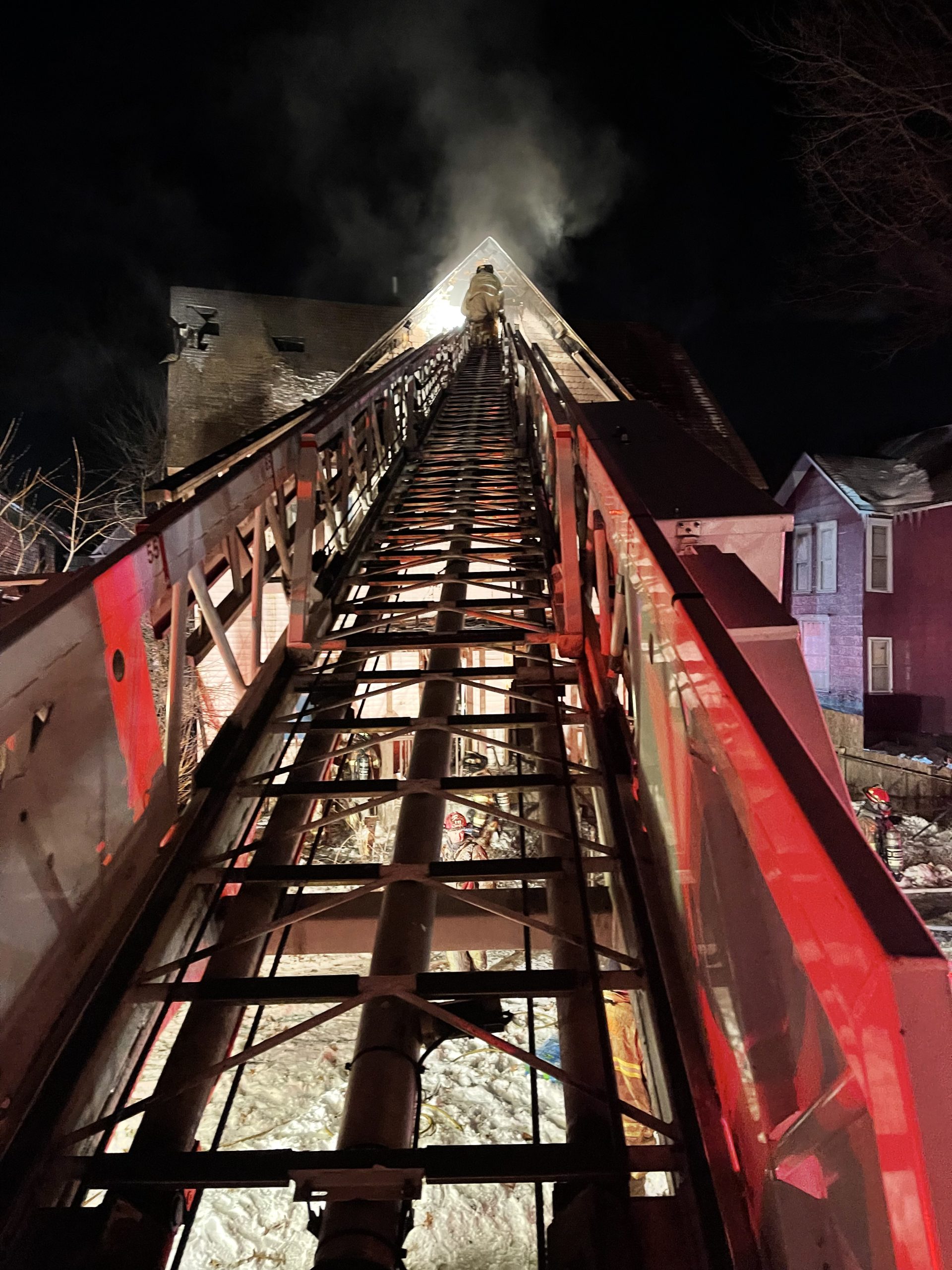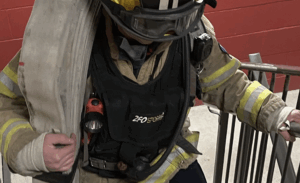In the world of firefighting, there’s more to the story than just battling blazes. Modern firefighters are multi-talented individuals who explore diverse and fulfilling specialized career paths within the fire service.
Fire departments offer specialized training to their members, equipping them with the skills needed to excel in these distinctive roles. The allure of specialized firefighting extends beyond the call of duty, often with premium pay incentives for those who attain advanced certifications.
Join us as we delve into these captivating, specialized firefighter career options, where these dedicated professionals go above and beyond to protect their communities.
If you want more details about the hiring requirements, read Firefighter Hiring Requirements and Preferences Explained.
Table of Contents
Firefighter Career Paths - Paramedic
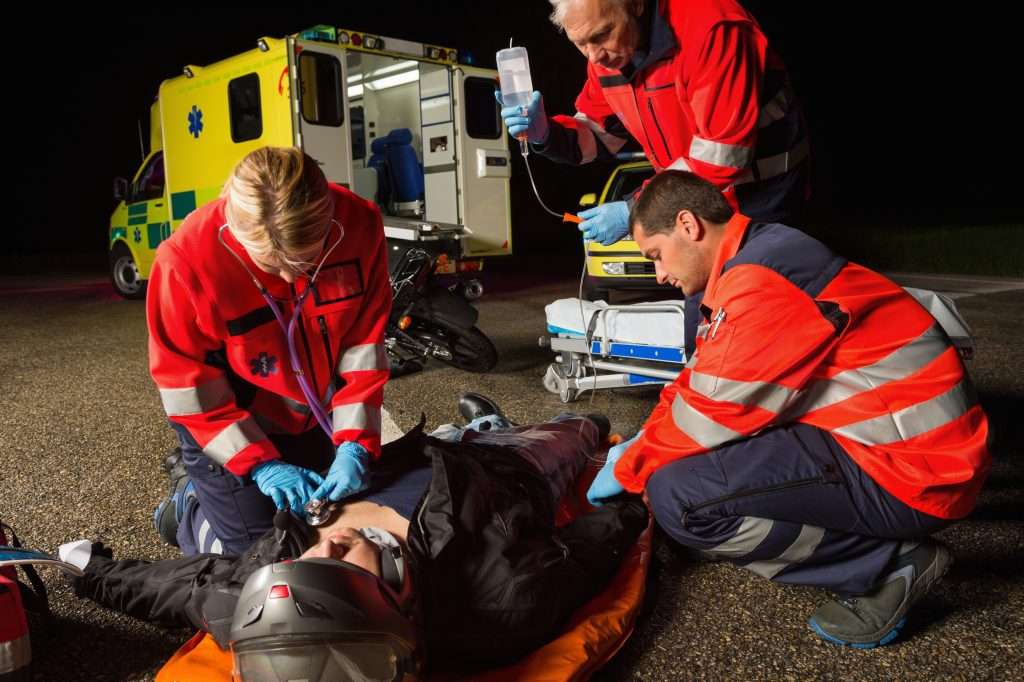
While many fire departments extend their responsibilities to include emergency medical services (EMS) for their communities, not all EMS personnel are created equal.
It’s essential to understand the distinct role of paramedics, especially when most firefighters start their journey as emergency medical technicians (EMT).
The foundation of a paramedic’s career often begins with EMT training. EMTs, the backbone of emergency medical response, are highly skilled first responders capable of providing initial medical care in critical situations. They are equipped to manage a range of medical emergencies, from administering CPR to stabilizing patients in distress.
However, paramedics take that level of expertise to new heights. They are often designated as EMT-P, with the “P” signifying paramedic. Paramedics undergo extensive training and education, building upon the EMT foundation to become specialists in advanced emergency medical care.
Paramedics play a pivotal role in emergency medical response, primarily focused on providing advanced care to critically ill or injured patients. Here’s what sets paramedics apart:
1. Advanced Medical Procedures:
Paramedics are trained to perform various advanced medical procedures, such as administering intravenous medications, managing complex airway issues, and interpreting electrocardiograms (ECGs). They are equipped to handle life-threatening situations with precision and expertise.
2. Medication Administration:
Paramedics have the knowledge and authorization to administer various medications, including those needed to control pain, manage cardiac issues, or address allergic reactions. They can assess a patient’s condition and provide the appropriate medication in emergencies.
3. Assessment and Diagnosis:
Beyond basic assessment, paramedics are skilled in diagnosing medical conditions and injuries. Their expertise helps determine the most suitable course of action and care for the patient, ensuring timely and effective treatment.
4. Trauma Management:
Paramedics excel in managing trauma cases, from accidents to severe injuries. Their training allows them to provide specialized care and interventions, including advanced wound management and fracture stabilization.
5. Critical Decision-Making:
In high-pressure situations, paramedics are trained to make rapid, critical decisions that can mean the difference between life and death. Their ability to assess, diagnose, and initiate treatment is essential for the well-being of acute patients.
6. Patient Advocacy:
Paramedics often act as patient advocates, ensuring that the individual receives the most appropriate care and, if necessary, coordinating with hospitals or medical facilities to provide seamless care transitions.
In summary, paramedics represent the pinnacle of emergency medical care within the fire service. They are dedicated professionals who are not only skilled in life-saving techniques but are also capable of making complex medical decisions under pressure. Their role is vital in providing advanced emergency medical care to critical patients and contributing to their communities’ safety and well-being. It is one of the most sought-after candidate certifications in fire departments with an EMS service, making it a popular firefighter career path.
Advanced Technical Rescue Firefighter Career Paths
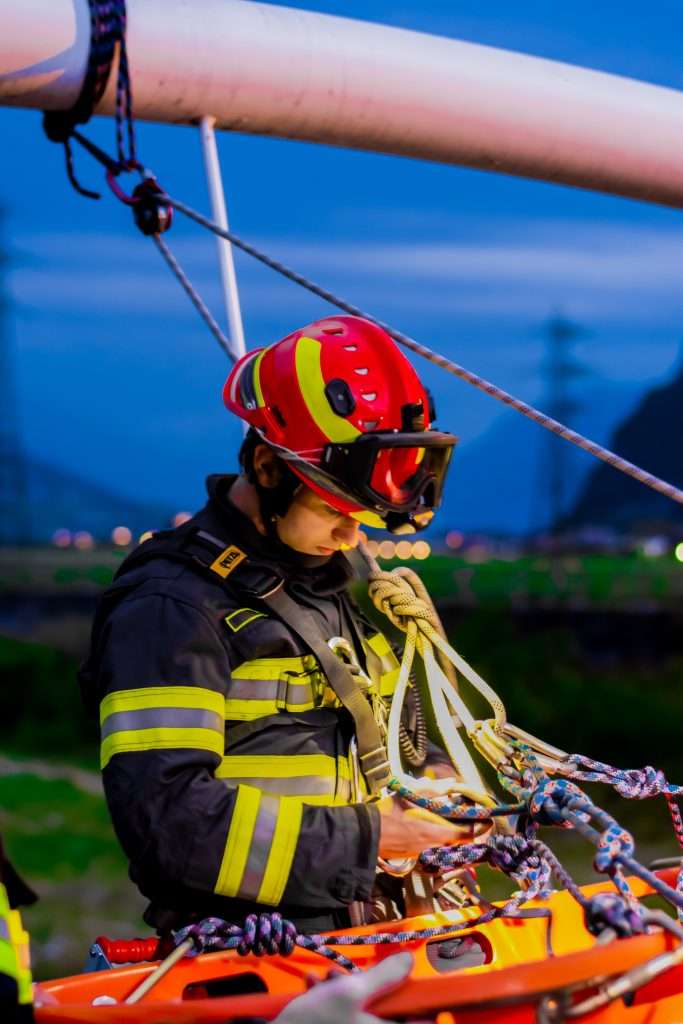
The Advanced Technical Rescue (ATR) team is a beacon of expertise, prepared to tackle the most challenging rescue scenarios within specialized firefighting. These teams are a vital asset in the fire service, with a roster of highly trained specialists ready to respond to various complex situations.
Advanced Technical Rescue teams are a testament to the versatility of the fire service. They bring together specialized members equipped with unique skills and knowledge to accomplish the most daring and complex rescues.
Let’s take a closer look at some of the key components of ATR teams:
1. Rope Rescue:
Rope rescue specialists are trained to navigate vertical and high-angle environments. Whether it’s rescuing a stranded climber on a mountainside, retrieving a worker from a towering structure, or saving someone stuck in a deep ravine, these experts employ their rope skills to perform breathtaking rescues.
2. Confined Space Rescue:
Confined space specialists are skilled in extricating individuals from tight, hazardous spaces like tunnels, tanks, and underground chambers. These environments pose unique challenges and dangers, making the role of confined space rescuers critical.
3. Trench Rescue:
Trenches can be treacherous places, and trench rescue experts are called into action when someone is trapped or in danger. These professionals understand the specific hazards of working in and around trenches and are well-versed in the techniques required for a safe rescue.
4. Structural Collapse Rescue:
When buildings or structures crumble, structural collapse specialists are the ones who come to the rescue. They can navigate unstable, disaster-stricken sites, often working with search and rescue teams.
5. Water Rescue:
Whether dealing with swift water, floodwaters, or aquatic emergencies, water rescue specialists are skilled in saving lives in and around bodies of water. Their expertise extends to water-based scenarios, from swift river currents to open water rescues.
6. Wilderness Search and Rescue:
In remote and rugged environments, wilderness search and rescue specialists play a vital role. Their job involves locating and aiding lost or injured individuals in the wilderness, often in challenging terrain and adverse weather conditions.
7. State Urban Search and Rescue (SUSAR):
In some fire departments, members of ATR teams may also serve as part of the State Urban Search and Rescue (SUSAR) team. These individuals are specially trained to respond to large-scale disasters like earthquakes, hurricanes, or terrorist attacks. Their capabilities extend to heavy rescue operations, structural assessments, and medical care in disaster-stricken areas.
The role of ATR teams is to navigate the extraordinary and the unexpected, making them an invaluable resource within the fire service. Their specialized training, equipment, and unwavering commitment to safety ensure that even in the most challenging circumstances, there is hope, rescue, and a dedicated team of experts prepared to answer the call.
Learn How You Can Become A Firefighter

Mastering the Firefighter Exam is a complete guide on how to pass the firefighter exam with a top score. It simplifies the complicated hiring practices of big city fire departments and reveals insider information most candidates don’t know about.
If You Would Like To Know How To Get A Head Of Your Competition, This Book Is For You.
Helicopter Rescue firefighter Career Paths
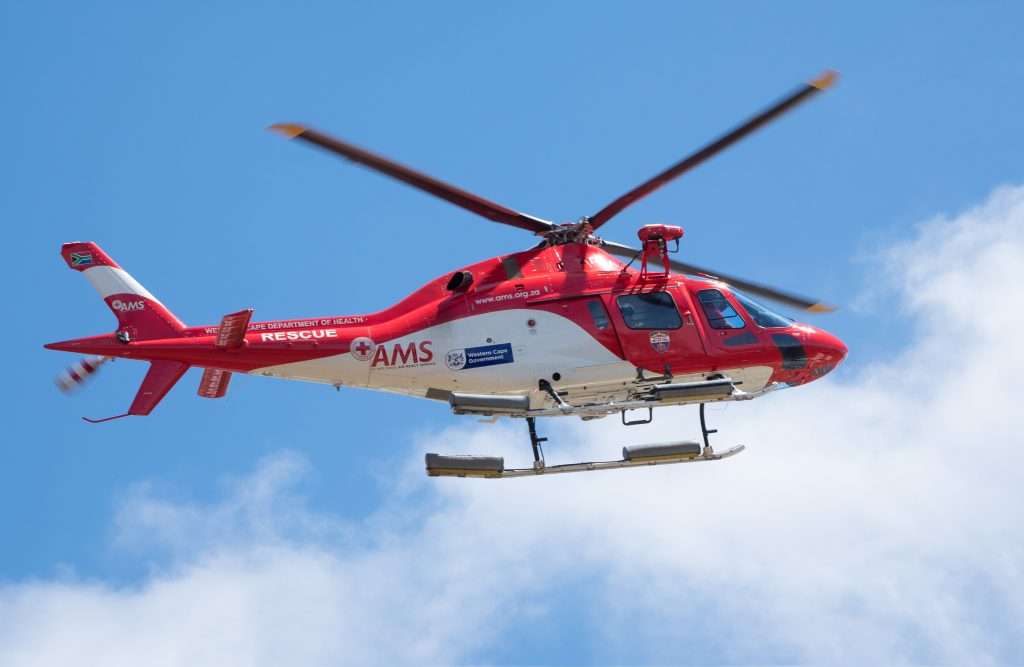
In specialized firefighting, helicopter rescue teams stand out as a beacon of hope for individuals facing life-threatening situations in challenging terrains or conditions that conventional rescues may not readily address.
These teams often serve in states or large metropolitan areas and ensure that those in dire need receive timely assistance. Helicopter rescue personnel are highly trained individuals who excel in working with pilots and emergency medical professionals to ensure victims’ safe and efficient evacuation.
The Diversity of Helicopter Rescues
Helicopter rescue missions can vary significantly from one region to another, as they are tailored to address the unique demands of their specific locales. Here are some of the key aspects of helicopter rescues:
1. Endangered Mountain Climbers:
In mountainous areas, where treacherous terrain and extreme altitudes pose risks to climbers, helicopter rescue teams are a lifeline for those who encounter difficulties. Whether it’s an injury, exhaustion, or inclement weather, these rescuers are skilled in extracting stranded climbers and providing them with the necessary care.
2. Lost Hikers:
When hikers wander off the beaten path and find themselves disoriented or in distress, helicopter rescue teams come to their aid. These experts are equipped to locate and rescue lost hikers in vast wilderness areas, ensuring their safe return.
3. Support for Smoke Jumpers:
Smoke jumpers are courageous firefighters who parachute into remote areas to combat wildfires. Helicopter rescue teams offer crucial support by evacuating injured or stranded smoke jumpers from challenging fire zones.
4. Water Rescue Emergencies:
Helicopter rescue personnel are ready to intervene in water-based emergencies, such as swift water incidents or open-water rescues. Their training extends to performing water rescues, whether it’s a stranded boater, a swimmer in distress, or someone caught in a flood.
One of the remarkable aspects of helicopter rescue teams is their ability to work seamlessly with helicopter pilots and medical professionals. This collaboration ensures the success of the rescue mission. Here’s what sets these specialized rescuers apart:
- Coordination with Pilots: Helicopter rescues demand precision flying in often challenging conditions. Rescuers and pilots must work in perfect harmony to execute rescues in tight spaces, high altitudes, and under adverse weather conditions.
- Emergency Medicine: Helicopter rescue personnel often include medical professionals who are skilled in providing emergency medical care. Whether stabilizing injuries, administering critical medical interventions, or offering comfort to patients during the flight to safety, their expertise is indispensable in ensuring the well-being of those they rescue.
- Evacuation Procedures: The evacuation process begins Once victims are located and stabilized. Helicopter rescue personnel are trained in efficient and safe hoisting or loading procedures to ensure that victims are securely transported to the helicopter and receive continuous care during transit.
The role of helicopter rescue teams embodies bravery, precision, and adaptability. They serve as the guardians of those in distress, offering hope and a lifeline in situations where time is of the essence. Their dedication to safety and unwavering commitment to saving lives make them an essential asset to the fire service and offer exciting firefighter career paths.
Fire Investigations Firefighter Career Path
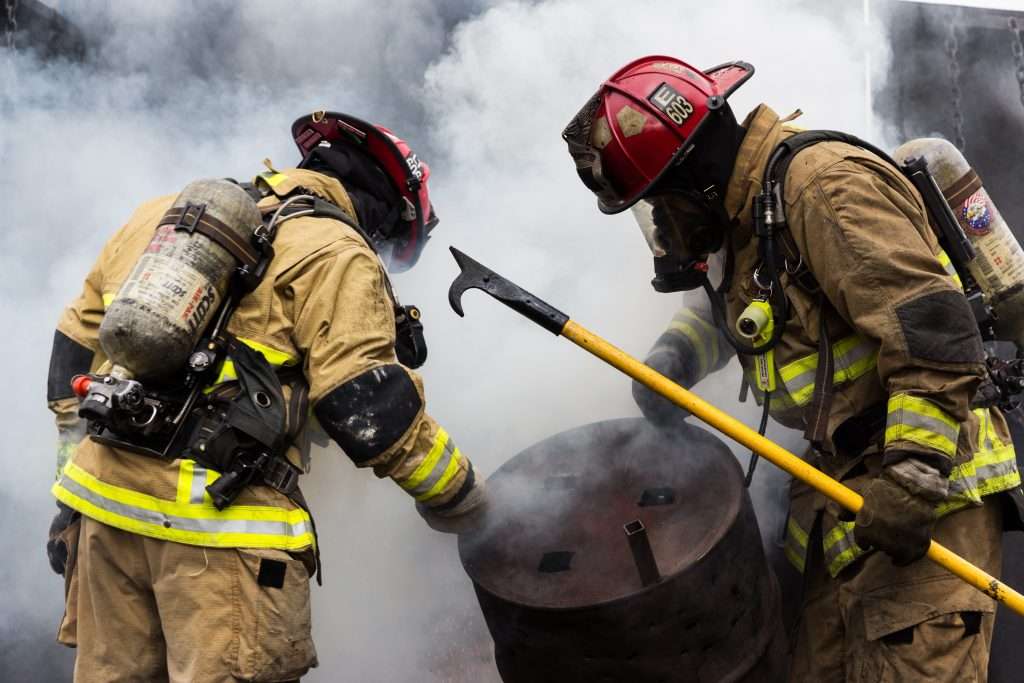
In the firefighting world, fire investigators are essential in safeguarding communities against the devastating impact of fires, particularly those caused by arson or suspicious circumstances.
While most paid fire departments maintain a dedicated fire investigations unit, the work of these investigators goes far beyond merely determining the cause of fires.
These highly trained individuals play a pivotal role in understanding the dynamics of fires, contributing to future prevention efforts, and ensuring that justice is served when fires result from criminal acts.
Here’s a closer look at the multifaceted role of fire investigators:
1. Determination of the Cause:
At the heart of every fire investigation is the quest to determine the cause of the fire. Investigators are trained to examine fire scenes meticulously, searching for evidence that can shed light on the origin and progression of the fire. Understanding the cause is crucial in both accidental and intentional fires.
2. Arson Investigations:
Arson, the deliberate act of setting fires with criminal intent, is a significant focus of fire investigators. They are specially trained to identify the signs of arson and collect evidence that can be used in legal proceedings. Their work often leads to the apprehension and prosecution of arsonists.
3. Evidence Collection:
Fire investigators are skilled in collecting and preserving evidence related to fires. This may include analyzing fire patterns, studying burn patterns on surfaces, and retrieving samples that can be tested for accelerants or other substances that may have contributed to the fire.
4. Witness Interviews:
Investigators often interview witnesses, occupants, and individuals who may have valuable information about the fire. These interviews help reconstruct the events leading up to the fire and can provide critical insights into its cause.
5. Collaboration with Law Enforcement:
Fire investigators collaborate with law enforcement agencies to build cases against arson suspects when fires are determined to be criminal acts. This collaborative effort involves sharing evidence, conducting joint interviews, and providing expert testimony in court.
6. Prevention and Education:
The findings of fire investigations play a significant role in preventing future fires. Investigators identify trends and patterns in fire causes, which can inform fire prevention initiatives and public education efforts. Their work helps communities understand the risks and take measures to reduce fire incidents.
Fire investigators are the guardians of justice, ensuring that individuals who commit arson or endanger the lives and property of others are brought to account.
They also serve as educators, helping communities understand the importance of fire safety and prevention. Their dedication to uncovering the truth behind fires, be it accidental or criminal, is a cornerstone of public safety and the firefighting profession.
Conclusion
In the diverse and dynamic world of firefighting, specialized career paths offer a unique and essential dimension to fire service. These specialized firefighters are the unsung heroes who stand ready to face exceptional challenges, often pushing the boundaries of what traditional firefighting encompasses.
These career paths exemplify firefighters’ versatility, dedication, and unwavering commitment to protecting lives and property.
They showcase the ever-evolving nature of the U.S. Fire Service, where adaptability and expertise are the hallmarks of success. As specialized firefighters, they embody the spirit of heroism, always ready to respond to the unexpected, the unseen, and the extraordinary.
These specialized career paths are a testament to the vast and noble mission of the firefighting profession: to save lives, protect communities, and make the world a safer place for all.
If you want more details about the fire department hiring process, read The Fire Department Hiring Process: Unlocking Opportunities.
Learn How To Become A Full-Time Firefighter

Mastering the Firefighter Exam is a complete guide on how to pass the firefighter exam with a top score. It simplifies the complicated hiring practices of big city fire departments and reveals insider information most candidates don’t know about.
If You Would Like To Know How To Get A Head Of Your Competition, This Book Is For You.

